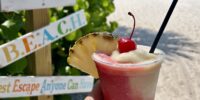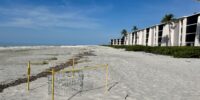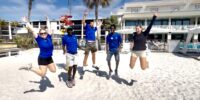Identify Marine Life on your Beach Walk
Have you ever been walking along the beach, looked down, and thought to yourself, “what the heck is that?!” Well, you’re in luck! We asked the experts at Sanibel Sea School to help us identify some of the most ‘what the shell?’ creatures you might encounter on your beach walk. Do you have any odd finds you’d like us to help identify? Send the pictures our way!
Sea Hare
Sea hares belong to a group of animals called gastropods (stomach foot). These animals are commonly referred to as sea slugs. These creatures do not have an external shell but rather a small internal shell made of protein. Some species release a bright ink when stressed – tinted purple from the red algae they graze upon.
Onion Anemone
The onion anemone is a common species sighted on Sanibel in the intertidal zone. They mostly live buried in the sand but are sometimes found washed ashore. They belong to a group of animals called cnidarians, closely related to jellies, corals, and hydroids. All of these animals are equipped with stinging cells. All anemones are carnivorous and feed on plankton and tiny fish.
Parchment Tube
These white casings are from a parchment tube worm. The worms burrow into the sand in a u-shape and create the paper-like casings around themselves. Typically, when the casing has washed up, the worm has died leaving the casing behind. These worms can produce blue bioluminescence! Sanibel Sea School has a blog post all about them.
Sea Pork
Sea pork is a type of colonial tunicate. It lives attached to rocks or other surfaces in shallow waters. Tunicates are filter feeders. They have two tube like structures called siphons – water enters through one, plankton and oxygen are removed, and water passes back out the other siphon.
How many of these shoreline oddities have you spotted during visits to Sanibel?










